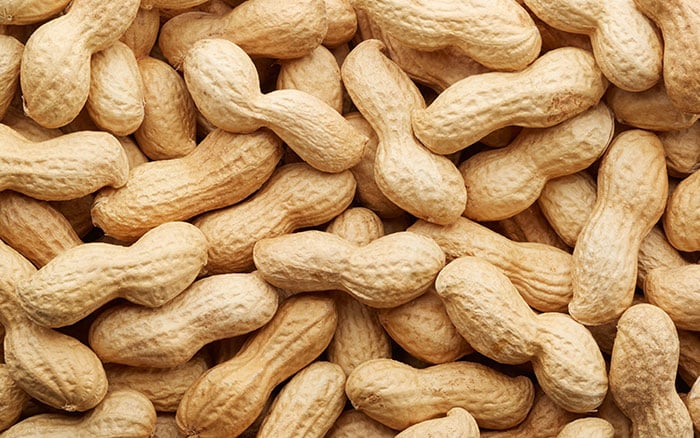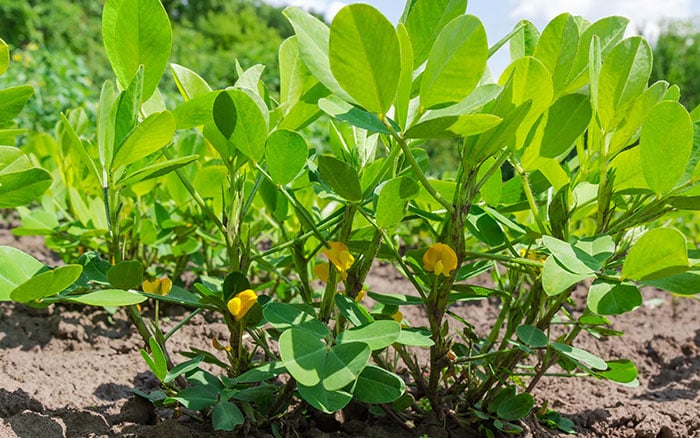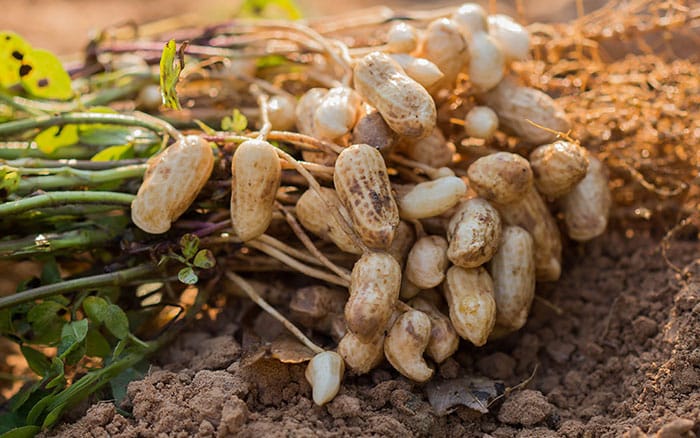Peanuts are an incredibly popular snack and ingredient all around the world. But what if you could grow your own peanut plant at home?
That’s nuts!
In 2020, peanut consumption in the US has risen by 3.2% to the highest recorded 7.6 pounds per capita.
However, these figures pale in comparison to the world’s largest peanut producer and consumer – China. It’s estimated that in China the domestic consumption is 3,800 tonnes every year, using them for boiling and adding to sweet and savoury dishes.

But did you know that peanuts aren’t actually nuts? In fact, they are botanically legumes.
Peanuts were first grown in valleys of Paraguay and were spread across the world by Spanish conquistadors and European traders.
Growing peanuts
You might be surprised that peanuts can be grown in the UK. Although, they do need warm temperatures to grow and will not germinate unless the soil temperature reaches 18˚C.
In cooler climates, it’s ideal to grow them in dark-coloured containers because it’ll help keep the roots nice and warm.
The plant is annual and herbaceous, and very fast-growing, reaching 30 to 50cm tall.

It’s also a very nice-looking plant, with dark green divided leaves and lovely yellow, pea-like flowers with orange lines running through them.
Peanut plants need regular watering, around 500ml to 1000ml of annual rainfall, or the equivalent water supply from irrigation. But they don’t like to sit in water, so plant them in well-drained soil or a multi-purpose compost.
Start them off in 5cm pots during May. You should start to see bright shoots after a week.
Then you can put them on a windowsill, but not in direct sunlight, or in a container on the patio. You can also plant them directly in the ground once any cold weather has passed.
Picking peanuts
The plants are self-pollinating, which means that the stalks bend over in the summer and force the developing nuts into the soil, where they develop. That’s why some people call them ‘ground nuts’.
The pods ripen approximately 120 days after the seeds are planted. To harvest the peanuts, pull the entire plant out of the ground to expose the pods.
Leave it to dry out for three to four days, until the peanut pods lose around a third of their moisture.

Once they are dry, separate the pods from the plant by threshing – just bash the plant against a hard surface like a sideboard or a step until the pods come off.
One word of warning – peanuts need four to five months of warm weather to develop the pods, so if you think it will be too cold, stick the plant in the greenhouse for a bumper crop.
So, give yourself a challenge this summer and grow peanuts using these tips.
David Domoney is a Chartered Horticulturalist, Broadcaster, and Author. David has worked with a number of the UK’s leading garden retailers as a plant buyer and strategic consultant. With more than 30 years experience, in horticulture, David is as passionate about plants now as he was when he bought his first plant at a village fete.







I’m in England and wonder if I might grow these in my greenhouse? (I just love your information; keep it up and I will follow)
Where can I buy the plants/seedling to grow these peanuts?
Hi Marianne,
Thanks for your comment. Peanut (Arachis hypogaea) seeds can be found on sale in most garden centres. Alternatively, you can purchase peanut seeds online and Amazon has quite a large variety on sale.
I hope this helps.
I am a peanut lover especially with a gin&tonic. Thank you for your information regarding growing peanut plants. I will give it a go.
Yo
My friend told me she was growing peanut I thought she was having a laugh!!!!!! Bu there you go .is it to late to start now?. regards trish
Hi
Thank you for your advice, it’s really helpful
Earlier this year I bought a set of three Peanut plugs, ready to plant, I planted mine in a large blue pot. I pre ordered these in February, and I received them around May to June. Although we had an extremely hot summer, my peanuts are not in flower yet, as we are already in October.
Again thank you
thanks for teaching me about peanuts it was such a great learning experience than you for your time and effort i love peanuts thanks
hey Dave, my name is Also Dave, and I appreciate your interest in peanuts! and I would like to grow peanuts as well